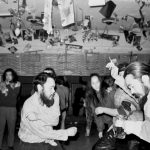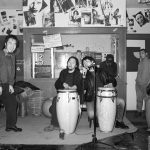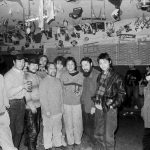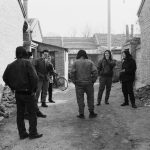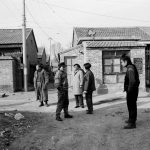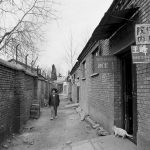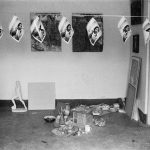AN INTERNATIONAL POETRY JOURNAL IN ENGLISH & CHINESE
The Light of Measured Days: In the Garden of Perfect Brightness
Photos © Hu Min
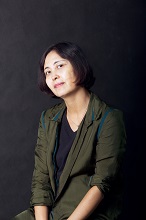
Hu Min, born 1964 in Jinan, Shandong Province, China, came to Beijing in 1993, where she lived and worked as a photographer and artist in the Yuanmingyuan art community, on the grounds of the Old Summer Palace. Her early works include serial efforts such as ”Ruins” (1993); “Yuanmingyuan Artists’ Village ” (1993-1995); “Female” (1995-1999); “Children”(2000-2001); “Couples” (2002); “Disguises” (2002); and “Petitioners” (2003). Aside from still photography, she has also collaborated in documentary films.
In China, Hu Min’s photography has been featured in many exhibitions, including the 2002 Pingyao International Photography Show; the 2003 Beijing Contemporary Art Exhibit “Overflow”; the 2002 Beijing Shifang Art Center one-woman show, “Children”; and the 2006 Beijing World Art Museum’s “Body Temperature: Invoking the Legacy of Hans Christian Andersen through Chinese Contemporary Art”. Some of the images from this Pangolin House issue appeared the same year in “Drifting Archive: Yuanmingyuan Artists’ Village” at Beijing’s Today Art Museum. More recently, her work was included in the invitational Shangyuan Women’s Art Exhibition in Beijing.
Abroad, her work appeared in the 2004 Kunstmuseum Bonn and University of Bonn’s international seminar “Eastern and Western Aesthetics: Art and Identity”, followed by an exhibition in Bern, Switzerland, and another in Ghent, Belgium. Her solo show, “Children of the Field”, was mounted in 2007 at Colgate University in New York. In 2011, she was invited by the Goethe-Institut to create a documentary album of contemporary Chinese artists, Zeitgenössische Künstler aus China.
Hu Min’s photos have been published domestically and internationally in numerous magazines, photographic and literary anthologies, as well as fashion and art journals, and are held in various private or institutional collections. She lives and works in Bejing.
胡敏,1964年生於山東濟南,1993年移居北京,入住圓明園藝術家村,正式開始攝影藝術生涯。主要作品為「廢墟系列」(1993)「圓明園畫家村系列」(1993—1995),「女性系列」(1995—1999),「孩子系列」(2000—2001),「一對系列」(2002),「喬裝系列」(2002),「上訪者」(2003)等。除攝影外,還涉足紀錄片拍攝,與人合作紀錄片數部。
作品曾參加2002年平遙國際攝影展;2003年北京「溢出」當代藝術展;2002年11月在北京世芳藝術中心舉辦作品個展「孩子」;2004年2月中旬應邀參加德國波恩國家藝術館和波恩大學聯合舉辦的「東西方美學:藝術與身份」國際研討會並在會上展示攝影作品;2004年2月下旬應邀分別在瑞士伯爾尼文化中心、比利時根特市帕塔托皮亞藝術中心舉辦攝影展;2005年3月參加北京中華世紀壇「體溫:紀念安徒生200周年」中國當代藝術展;2006年4月在北京今日美術館舉辦「漂流檔案:圓明園藝術家村」攝影展;2006年9月參加韓國首爾版畫與攝影展;2006年11月參加廣東連州國際攝影節;2007年10月在美國紐約州柯蓋特大學文化中心舉辦攝影展「田野上的孩子」;2014年參加北京上苑女藝術家邀請展。
胡敏作品在國內外多種攝影、文學、時尚、藝術雜誌及出版物上發表,並被多家美術館、藝術機構及個人收藏。2011年,接受德國藝術學院和歌德學院委約,拍攝中國藝術家文獻集《Zeitgenössische Künstler aus China》。
Note
In the late 1980s, a corner of the Yuanmingyuan Gardens in north Beijing attracted several young Chinese artists seeking respite from the central city’s higher costs and bustling commercialism. Renting simple village houses, they found quiet, affordable space, and lived in their studios. Over the next few years, other artists, writers, and musicians arrived, creating what became known as the Yuanmingyuan Artists’ Village, a vibrant hub of intense creativity. By 1993, however, the site had become so popular with visitors, the media, and gallery owners that its original attractions were fast disappearing. It also drew greater attention from authorities who regarded its proximity to Peking University’s large campus, immediately to the south, as potentially troublesome. In 1995, police intrusions became more frequent, often late at night, when this or that artist was ordered to leave. By the end of the year, few were left, many having moved to Songzhuang, an art community forming in the Tongzhou district east of Beijing, while others went elsewhere. In its brief life, idyllic though impecunious, Yuanmingyuan Artists’ Village served as a rich seedbed for the new Chinese art that followed. These photos, taken by Hu Min during her Yuanmingyuan residence, commemorate the era.
一九八零年代末,一些年輕的畫家為了尋求一個可靠的創作環境,避開城市中心日漸紛擾的商業影響,開始在北京北部的圓明園廢墟上落腳。他們租住簡單的村屋,這裡安靜又可負擔的空間為他們提供條件建立自己的工作室。接下來的幾年,有更多藝術家、作家、音樂家遷居於此,我們後來所知道的圓明園藝術家村開始形成,一個震蕩的中心吸引著無數創作力。然而到了1993年左右,由於大量訪者、媒體和畫廊主聞名而至,這裡最初的魅力正慢慢消減。又因為比鄰南邊的北京大學,這樣一塊富有爭議的地方成為當局眼中的隱患,於是寄居在這裡的藝術家被逐漸驅散。至1995年底,大部分藝術家已經遷離,一些人移居到北京東郊的宋莊,後來這裡發展為宋莊藝術區。儘管只存在了短暫的數年,圓明園藝術家村兼具田園式的理想主義和波西米亞式的窘迫,被認為是此後中國當代藝術的發源地之一。胡敏在藝術家村期間拍攝的照片記錄下了這一值得銘記的時刻。

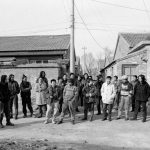
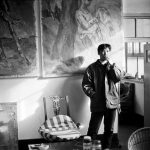
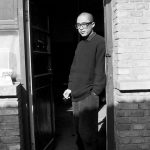
陕西人现居通州1993-150x150.jpg)
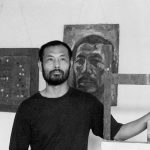
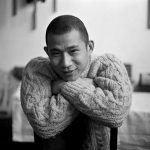
上海人现居通州1994-150x150.jpg)
贵州人现居望京1994-150x150.jpg)
青海人现居798-1994-150x150.jpg)
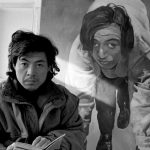

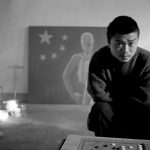
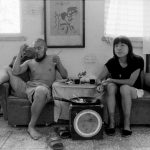
青海人-暮晨(女)东北人现居宋庄1994-150x150.jpg)
江苏人现居北京1994-150x150.jpg)
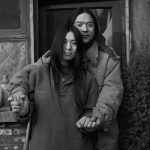
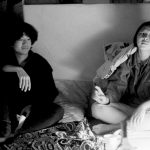
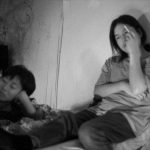
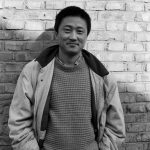
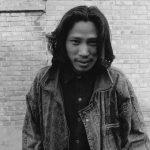
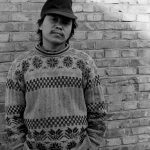
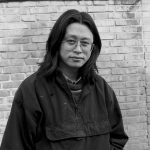
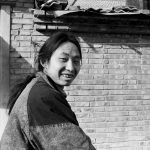
湖北人现居丹麦1994-150x150.jpg)
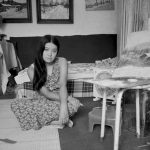
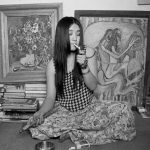
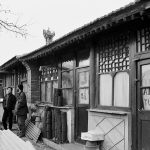
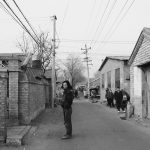
的生日一1994-150x150.jpg)
